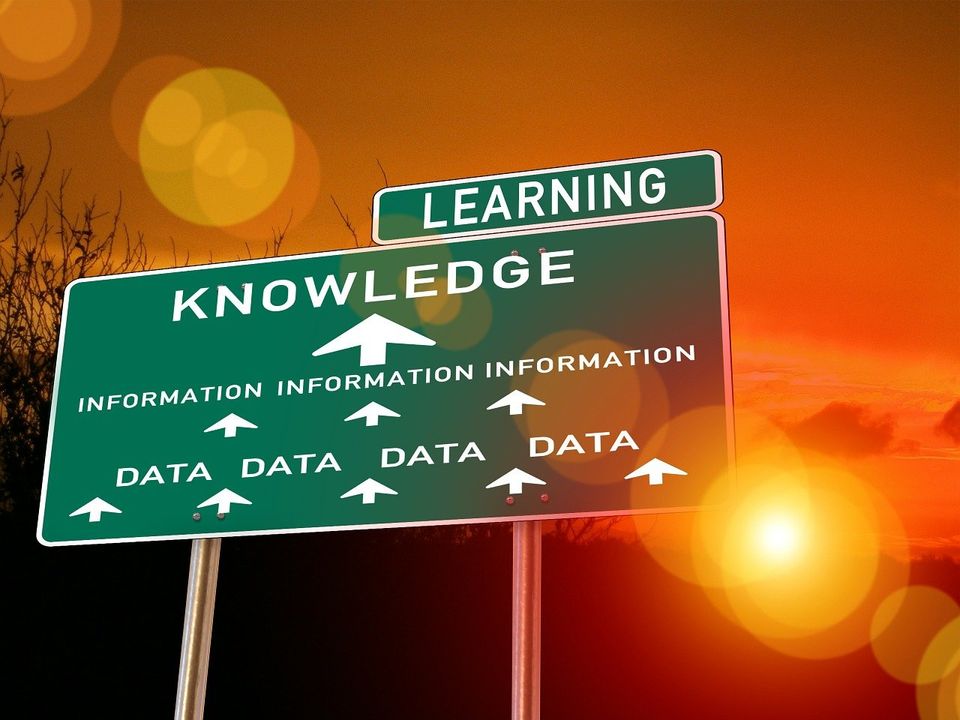The Digital Technical Challenge

This first week of Technical Writing in the Digital Age has not only taken me far out of my comfort zone, but has proven to have a steep learning curve for me. This is just my second course for the program and it started off already in overdrive. Even after working on the assignments daily, it's taken me to the last day to find my way. As depicted in the sign above, the week has been filled with volumes of data providing information, but the jump to acquiring knowledge has demanded persistence.
For someone whose first work laptop only had a four megabyte hard drive, I've been able to succeed in progressing with the digital age. However, I had never delved into social media and Wiki postings. I didn't even have a Facebook page until two months ago when it seemed advantageous in this educational endeavor.
What Did I Learn?
How little I knew about digital writing using the tools available. For most of my life, communicating through the written word, the ability to translate the complex into the understandable, and seeing errors in grammar and spelling have been natural for me. I had no idea the communicative power available from learning how to use the tools introduced this week. I've been a rabid consumer of information from these platforms, but never ventured into learning how beneficial they could be in my toolbox.
I learned what TL;DR means (Too Long, Didn't Read). In the military environment we use a different acronym with the same meaning - BLUF (Bottom-Line Up Front). The Golden Rule from our assignments that all writing should stand on its own is a reminder that I should always produce clear and credible communication. Dr. Lucas' Top Ten "Beatitudes" will remain highlighted in my notepad forever. My two favorites are:
Be Credible. Hitchens' Razor is simple but profound - "That which can be asserted without evidence can be dismissed without evidence."
Be Organized. The inverted pyramid visualization provides a memorable image relating to "leading with the most important material."
With this week's learning curve behind me, I'm eager to learn what lies ahead.
Lessons From the Assigned Reading.
The prescribed reading I chose was Lannon and Gurak's Technical Communication, Global Edition, 15th Edition, 2022. Their definition of technical communication is "the exchange of information that helps people interact with technology and solve complex problems." They are correct when they assert that "nothing replaces critical thinking skills." Artificial Intelligence can exchange information in attempts to solve complex problems, but it will never (probably) reach the human ability to think critically. They further reflect that "research is not the same as critical thinking."
I appreciate clear instructions. Their detailed lists provide great outlines to follow for successful technical communication. They are:
- Questions That Only a Person Can Answer.
- The Main Features of Technical Communication. (Hint - "Reader-centered")
- The Format of an Effective Technical Document.
- The Purposes of Technical Communication.
- Four Tasks in Preparing Effective Technical Documents.
Conclusion.
While studying the reading assignments and creating the information for the two platforms, a good example of technical documents that are written in such a way to be avoided are the instruction pamphlets for anything one would buy from IKEA. They are so vague that they become a stumbling block for anyone not mechanically inclined, to the point that a new industry has been created for people who assemble what others have bought.
This week was an introduction to rising far above the bar of an IKEA instruction manual.

Comments ()